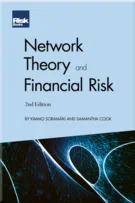Linking ESG scenarios to real economy outcomes
Michael Sheren
Linking ESG scenarios to real economy outcomes
Analysing ESG policy, market and portfolio construction considerations
Case Study 1: Applying ESG considerations to a pension fund’s equity portfolios
Case Study 2: Applying ESG concepts to wealth management portfolios
Managing environmental and climate transition risks and opportunities within portfolios
Considering physical climate risks and resilience in real asset investment
Case Study 3: Practical issues and considerations for implementing a Net Zero emissions strategy for asset owners
Evaluating social criteria in fundamental and thematic investment portfolios
Case Study 4: Defining impact investing for today‘s ethical investor – evaluating the efforts of Evangelisches Johannesstift
Developing governance and active ownership frameworks for investment analysis
Case Study 5: Applying active ownership and stewardship to a pension fund portfolio
Identifying ESG risks and opportunities in alternative investments
Reviewing the EU regulatory framework for ESG investors
Assessing data and disclosure challenges in ESG investing
Corporate social responsibility across industries: When and who can do well by doing good?
Reflecting on how ESG investing, accounting and governance have evolved over time
I was very pleased when asked to provide the Foreword to this important book on how environmental, social and governance (ESG) factors are fast becoming the most critical considerations in 21st Century investing. The risks, opportunities and trade-offs presented by ESG strategies, approaches and tactics are unprecedented; further, the speed and the breadth in which ESG is penetrating investment decision-making is unmatched. That said, there is still much to do to mainstream ESG analysis. That is why I believe this book, authored by a wide array of highly experienced academics, market participants and industry stakeholders, is essential reading for experienced and entry-level financial professionals alike.
Most investment professionals are aware of the risks associated with the environmental pillar of ESG. Environmental laws have been around since the 1960s. The risks to investment cashflows associated with water and air pollution, asbestos, plastics and soil contamination have grown steadily over the years. Remediation, liability risk and cost to capital, and share price performance associated with these once free-riding negative externalities has increased markedly. Even now
Copyright Infopro Digital Limited. All rights reserved.
As outlined in our terms and conditions, https://www.infopro-digital.com/terms-and-conditions/subscriptions/ (point 2.4), printing is limited to a single copy.
If you would like to purchase additional rights please email info@risk.net
Copyright Infopro Digital Limited. All rights reserved.
You may share this content using our article tools. As outlined in our terms and conditions, https://www.infopro-digital.com/terms-and-conditions/subscriptions/ (clause 2.4), an Authorised User may only make one copy of the materials for their own personal use. You must also comply with the restrictions in clause 2.5.
If you would like to purchase additional rights please email info@risk.net








